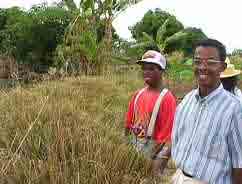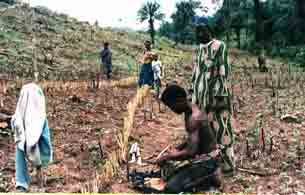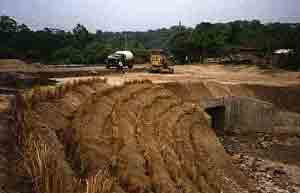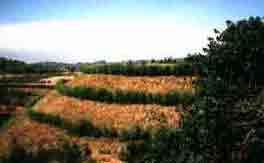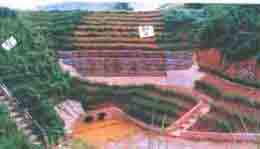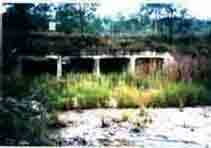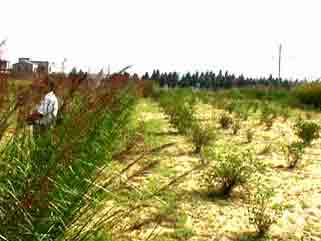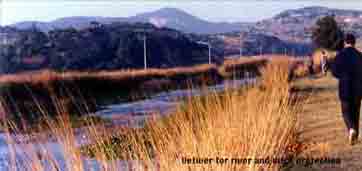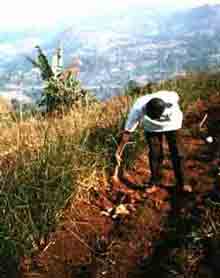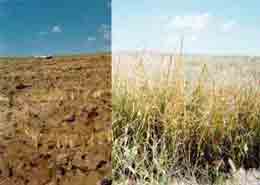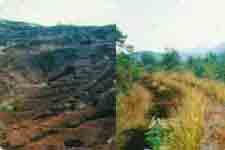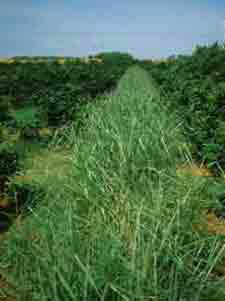Venezuela
TVN support to Sociedad Conservacionista Aragua (SCA) is leading
to a well planned investigation of vetiver in Venezuela and for its future use for
conservation. SCA's technical leader,Oscar Rodriguez, has
been recognized nationally for his vetiver initiatives. In its
first year SCA has identified traditional sources of vetiver in the interior of Venezuela,
has run a number of workshops, established demonstrations, and has supported LAVN in the
dissemination of information about the technology to other parts of Latin America. SCA is
working with other NGOs and agencies to establish vetiver propagation units and to train
potential users. TVN videos (in Spanish), slides and other teaching material has proven
very useful in SCA's work.
Mexico
TVN awarded a two year grant to the NGO "LASOS" for
vetiver initiatives with communities located in Oaxaca State. LASOS works as part of the
Program for Erosion Control and the Restoration of Soils of Oaxaca (PERCES). LASOS is
working in 10 locations with small farmers groups, (4 women's groups, 2 local farmers
groups, 2 community authorities and 2 NGOs). In the past two years 5 km of hedgerow were
planted, and 33 nurseries, 30 demonstartion sites, 17 research projects have been
established in 5 regions. More than 300 farmers, researchers and extensionists, including
40 women, have been involved in workshops, trainings, planting and maintenance activities.
Vetiver hedgerows have worked well, and reports of their effectiveness for soil
conservation seem well founded. The PERCES vetiver program has shown what can be achieved
when a comprehensive and coordinated approach is taken, and where the communities are seen
to be central to the program and its success. Jim Smyle and Joan Miller (Director and
Coordinator of the Latin America Vetiver Network) have visited Oaxaca and have provided
technical assistance to PERCES and LASOS. The program provides an excellent lesson as to
how communities, NGOs, Universities and government agencies can work together to achieve a
common objective it is the commonly owned "vetiver technology" that provides the
focus.
As a result of the success in Oaxaca, the PERCES members are a
supporting and providing training for a major erosion control project in the State of
Mexico where vetiver will be a major component. |
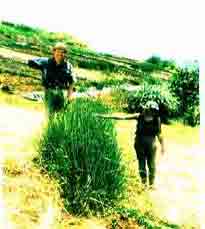
Euador - - Quote from Fundacion Golondrinas (FG) "The first
step in restoring land is by planting hedges of grass or bush in contour lines. FG has
selected Vetiver Grass for its amazing performance, its ability to stop run-off and build
up 'induced terraces'..". Here we see Maria-Eliza Manteca Onate, the founder of FG,
showing just how much sediment has been built up behind a vetiver hedegerow on very steep
and degraded lands in the Mira Valley of NW Ecuador. There are many countries in South
America who should take advantage of vetiver grass technology - - they don't - - for the
simple reason that people don't know about the technology. LAVN is working hard to get
information to where it is needed.
Ecuador
TVN is supporting the Ecuadorian NGO Fundacion Golondrinas (FG).
Because of the impact of El Nino there were serious fires in the project area, and the
program has not progressed as fast as expected. However, it has shown the need for good
demonstration, if farmers are to be persuaded to adopt the technology and the fire
tolerance of vetiver hedgerows. Even so FG has proven that vetiver will grow well on the
badly eroded and completely deforested area of the Mira Valley. Furthermore the
demonstration impact is starting to impact on local residents and on potential users
elsewhere in Ecuador. FG will therefore focus on establishing demonstrations that show the
impact of vetiver protection on crops, particularly pineapples. |
